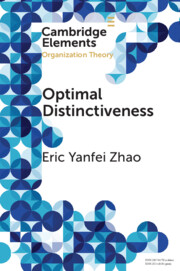Element contents
Optimal Distinctiveness
Published online by Cambridge University Press: 31 March 2022
Summary
- Type
- Element
- Information
- Series: Elements in Organization TheoryOnline ISBN: 9781108990561Publisher: Cambridge University PressPrint publication: 05 May 2022
References
- 19
- Cited by



